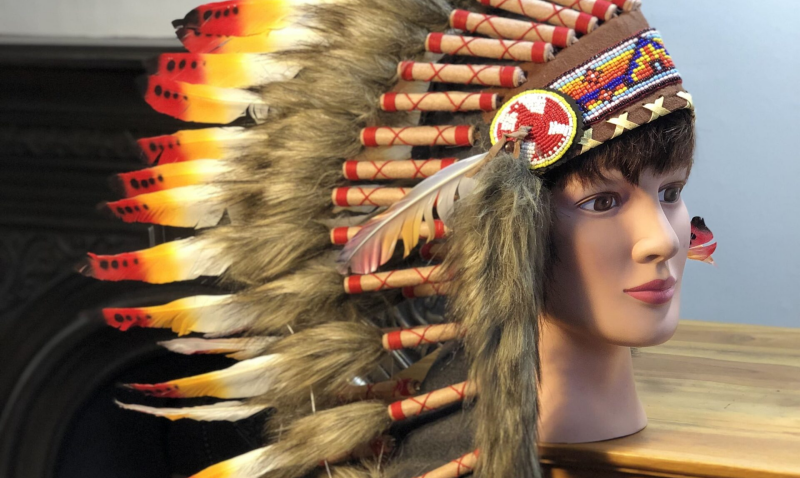
The Indian Headdress: A Rich Cultural Symbol in Native American
The Indian headdress, a beautifully crafted and culturally significant adornment, holds a profound place in the history of Indigenous peoples in North America. Often recognized for its vibrant feathers, intricate beadwork, and unique designs, the headdress serves as a powerful symbol of identity within Native American cultures. A headdress can represent the wearer’s tribe, status, and accomplishments. Yet, while the striking visuals of the Indian headdress have captivated many, it is crucial to understand the deeper meanings behind these remarkable pieces. In this comprehensive guide, we will explore the types of Indian headdresses, their cultural significance, the craftsmanship involved, the symbolism of the feathers, and the ongoing conversations surrounding their cultural representation. By the end of this article, you will better appreciate the Indian headdress as a meaningful cultural artifact.
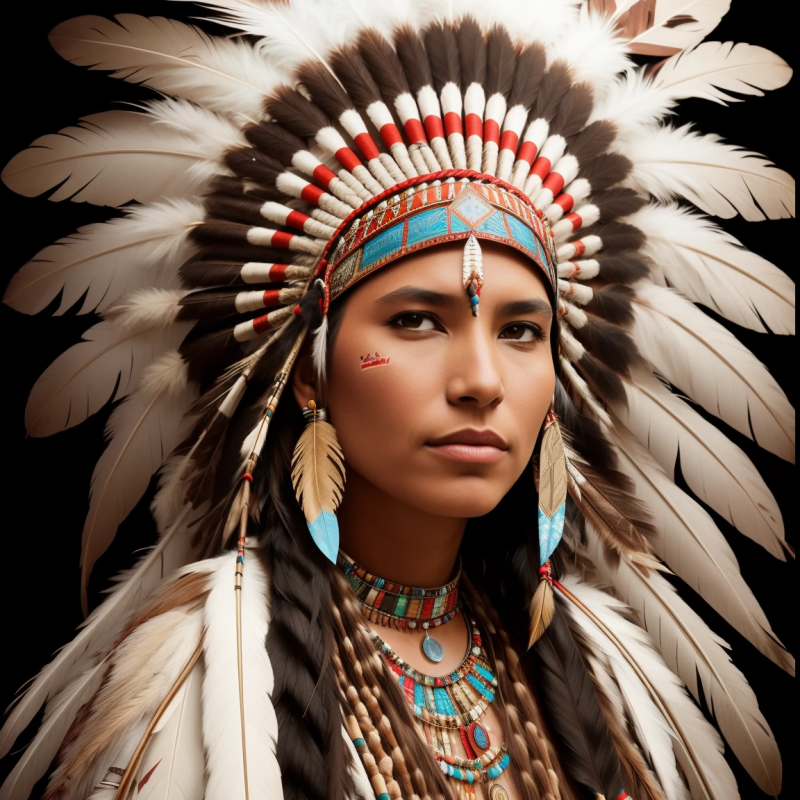
The Origins of the Indian Headdress
To appreciate the significance of the Indian headdress, we need to explore its origins and evolution over time.
Historical Background
The Indian headdress has roots in the rich traditions of Native American tribes. Originally, Indigenous peoples created embellishments from natural materials for various purposes. The headdress often served as a form of identity and representation. Various tribes embellished their headdresses according to their cultural beliefs.
Cultural Significance
The headdress has deep spiritual meanings. Many tribes believed that birds served as intermediaries between humans and the divine. Therefore, each feather used in the headdress was not merely ornamental; it carried spiritual significance.
Types of Headdresses by Tribe
Various tribes crafted different headdresses based on their cultural practices and materials. For example, Plains tribes, like the Lakota and Cheyenne, wore war bonnets adorned with feathers, which signified bravery. In contrast, the Northwest Coast tribes, such as the Haida, designed conical headdresses showcasing intricate artistry.
The Craftsmanship Behind Indian Headdresses
Creating an Indian headdress involves intricate artistry. This craftsmanship has been an essential tradition among Native communities for generations.
Materials Used
Different tribes used various materials to craft their headdresses. Common materials include:
- Feathers: These are often obtained from eagles, hawks, or turkeys. The selection of feathers greatly depends on cultural meanings and the status of the wearer.
- Leather and Fur: Many tribes utilized leather and fur for the base, which provided durability and additional decoration.
- Beads and Fabric: Artists often stitched beads and fabric into the design to add more personality and cultural significance.
The Process of Creation
Creating an Indian headdress requires skill and dedication. The process can take several days or weeks, depending on the style and complexity.
- Feather Preparation: Collecting and preparing feathers involves careful cleaning and treatment. Artisans often engage in spiritual practices before harvesting.
- Assembly: Once prepared, artisans begin assembling the headdress. Techniques may differ among tribes, but they typically include weaving or binding materials together.
The Role of Artisans
Artisans play a vital role in crafting these significant pieces. They are not only creators; they are also custodians of their culture.
- Cultural Knowledge: Many artisans gain knowledge about traditional headdress-making through learning from their elders.
- Contemporary Artists: Modern artists often blend traditional elements with contemporary designs. This innovative approach maintains cultural relevance while appealing to contemporary tastes.
The Symbolism of Feathers in Indian Headdresses
Feathers constitute an iconic aspect of the Indian headdress, embodying various meanings within Indigenous cultures.
Spiritual Significance
In many tribes, feathers are seen as gifts from the Great Spirit. Wearing feathers can provide spiritual protection and healing, representing strength and freedom.
Status and Accomplishments
The specific feathers used in a headdress can indicate the wearer’s accomplishments and social status within their tribe.
- War Bonnet: In many Plains tribes, only great warriors can wear eagle feathers in their headdresses.
- Cultural Representation: The number and type of feathers can signify personal achievements, leadership roles, or spiritual journeys, showcasing a visual narrative of one’s life.
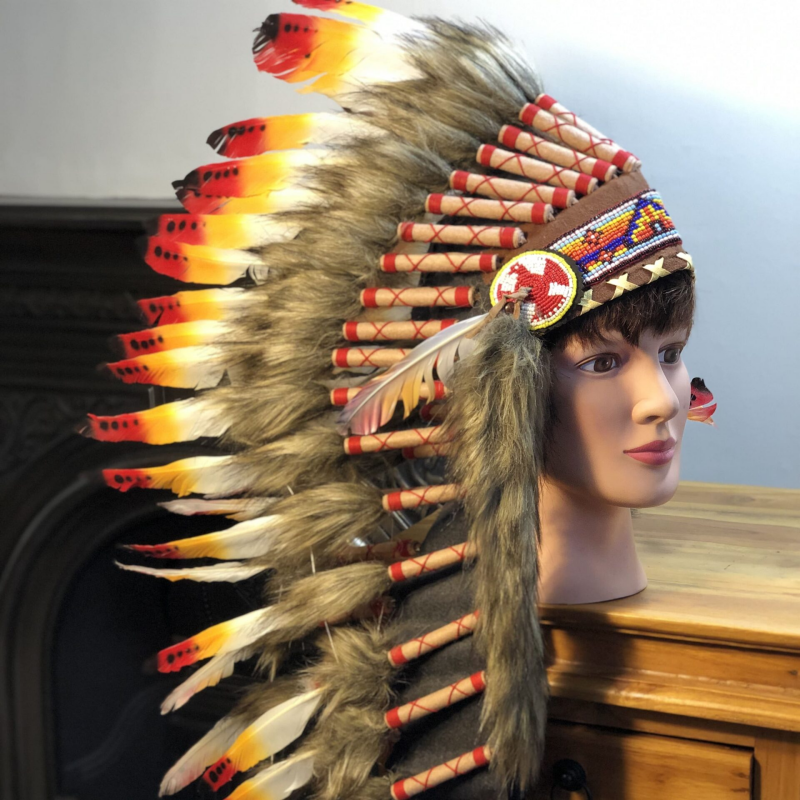
The Role of Ceremony
Feathers hold significant roles in various ceremonies and cultural expressions.
- Ritual Importance: Many tribes incorporate headdresses in ceremonies, dances, and other cultural events that reinforce their connection to traditions.
- Cultural Heritage: These practices help keep the history and meaning of the feathers alive for future generations.
Cultural Appropriation vs. Appreciation
In contemporary discussions, the conversation regarding the Indian headdress often revolves around cultural appropriation versus appreciation.
Defining Cultural Appropriation
Cultural appropriation occurs when elements of one culture are borrowed without understanding their significance. This practice can lead to the trivialization of meaningful symbols.
Misrepresentation of the Indian Headdress
The use of headdresses in popular culture can often perpetuate stereotypes.
- Fashion Statements: Some fashion brands have used headdresses simply as fashion statements, removing their cultural meaning. This practice can be disrespectful.
- Media Portrayals: Many films and television shows misrepresent Native cultures by inaccurately depicting headdresses, leading to misunderstandings about Indigenous identities.
Cultural Appreciation
In contrast, cultural appreciation involves respectful acknowledgment of another culture’s practices and traditions.
- Learning and Understanding: Those who genuinely appreciate Indigenous cultures typically seek to learn more about their beliefs and engage positively with Native communities.
- Supporting Artisans: Purchasing authentic Indigenous art and attending cultural events can demonstrate respect and support for Indigenous heritage.
Modern Trends in Indian Headdresses
Despite the controversies, Indian headdresses continue to evolve through contemporary fashion and artistic expression.
Contemporary Designers
Modern designers often draw inspiration from the aesthetics of traditional Indian headdresses. They create pieces that align with both traditional meanings and contemporary styles.
- Artisans Leading the Way: Indigenous artisans are reclaiming narratives by producing modern adaptations that respect their heritage while appealing to modern tastes.
- Sustainable Fashion: Some designers focus on sustainable practices. They emphasize ethically sourced materials in their creations, reflecting a conscientious approach to fashion.
Celebrating Indigenous Culture
Several platforms aim to celebrate Indigenous culture through art, fashion, and music.
- Social Media Amplifying Voices: Indigenous artists can share their work online, promoting a deeper understanding of their traditions and creativity.
- Powwows and Cultural Events: These gatherings allow Indigenous peoples to showcase their culture, weaving stories through traditional attire, including headdresses.
Caring for Your Indian Headdress
Proper care for an Indian headdress is essential for preserving its beauty and cultural significance.
Cleaning Guidelines
- Gentle Handling: Always handle the headdress with clean hands. This prevents dirt and oils from transferring onto the materials.
- Dusting: Use a soft cloth or a feather duster to remove dust. Avoid using harsh chemicals or cleaners that may damage your headdress.
- Spot Cleaning: For stains, apply a damp cloth to the affected area gently. Avoid soaking the headdress to prevent damage.
Storing Your Headdress
- Create Protective Storage: Store your headdress in a box or on a display stand, away from direct sunlight, which can cause fading.
- Humidity Control: Keep your headdress in a cool and dry location to protect the materials from humidity and temperature changes.
Handling with Respect
- Cultural Sensitivity: Always treat the headdress with the respect it deserves. Recognize that each piece carries deep cultural meanings.
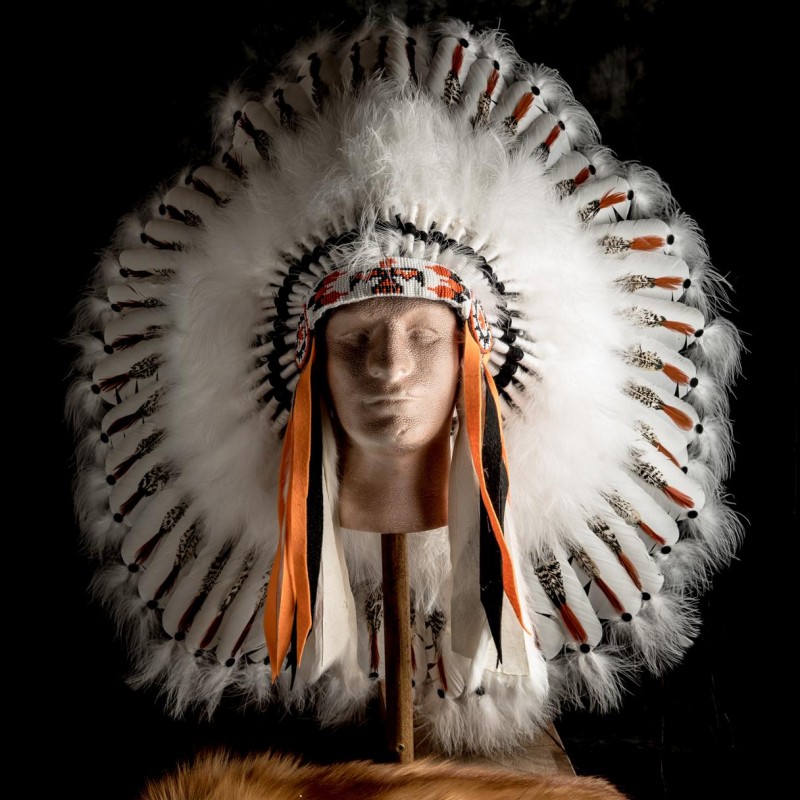
Conclusion
In conclusion, the Indian headdress stands as a testament to the artistry, spirituality, and cultural heritage of Indigenous peoples. Understanding how to tell the meaningful stories behind these beautiful adornments allows us to appreciate their historical and contemporary relevance. From their origins to the craftsmanship involved in their creation, each headdress carries essential narratives.
Moreover, promoting healthy discussions about cultural appropriation versus appreciation benefits both Indigenous communities and those interested in their cultures. Supporting Indigenous artisans and celebrating their narratives fosters respect and understanding.
Whether worn in traditional contexts or celebrated as art, Indian headdresses symbolize the complex interplay between identity, culture, and heritage. Encouraging genuine appreciation for these artifacts ensures their significance endures for future generations and fosters respect for the cultures they represent.




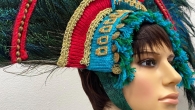
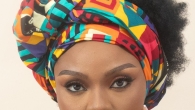
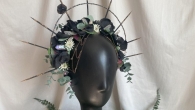
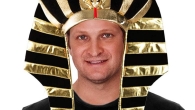
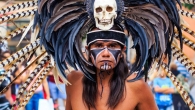
Leave a Reply